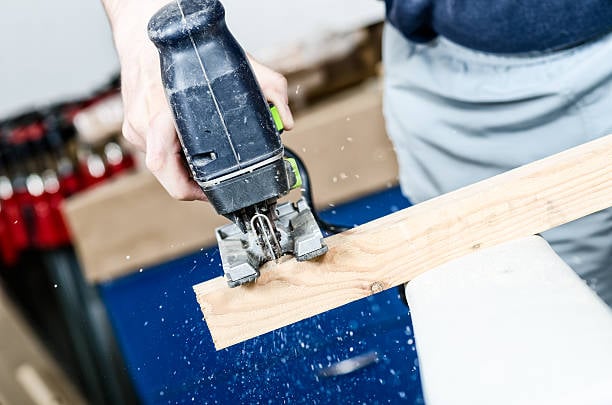Jigsaw VS reciprocating saw: Which Tool is Right for You?
When it comes to power tools, having the right tool for the job is essential. Two popular options for cutting through various materials are the jigsaw and the reciprocating saw. While they may seem similar at first glance, there are key differences between these two tools that make each one better suited for certain tasks. In this article, we will compare the jigsaw and reciprocating saw, highlighting their features, applications, and advantages. By the end, you'll have a clear understanding of which tool is right for you.
The Jigsaw: Versatility and Precision
The jigsaw is a versatile power tool that is primarily used for making curved cuts, intricate patterns, and precise cuts in a variety of materials such as wood, metal, plastic, and ceramic. It features a narrow, reciprocating blade that moves up and down rapidly to cut through the material. The jigsaw's adjustable base plate allows for bevel cuts at different angles, giving you the flexibility to create detailed shapes and designs.
One of the key advantages of the jigsaw is its ability to make plunge cuts, which means you can start cutting anywhere on the material without the need for a pre-drilled hole. This makes it ideal for tasks like cutting out sink openings in countertops or creating openings for electrical outlets.
The jigsaw's compact size and maneuverability make it easy to handle, allowing you to navigate tight corners and curves with ease. It also produces minimal vibration, resulting in cleaner, more accurate cuts. Additionally, many jigsaws offer variable speed settings, allowing you to adjust the blade speed to match the material and cutting task at hand.
The Reciprocating Saw: Power and Versatility
The reciprocating saw, also known as a "recip saw" or "Sawzall," is a powerful cutting tool that is designed for heavy-duty demolition work and rough cutting tasks. It features a larger, more robust blade that moves back and forth in a straight line, providing aggressive cutting action. The reciprocating saw is commonly used in construction, plumbing, and remodeling projects.
This tool is perfect for tasks like cutting through walls, pipes, and nails, as well as trimming tree branches and performing demolition work. Its powerful motor and long blade enable it to cut through thick, tough materials with ease. Unlike the jigsaw, the reciprocating saw is not designed for precision cutting or intricate designs.
One of the main advantages of the reciprocating saw is its ability to reach tight spaces and make cuts in hard-to-reach areas. Its long, narrow blade allows for easy access in confined areas, such as between studs or in corners. This makes it an invaluable tool for professionals working in construction and remodeling.
Which Tool Should You Choose?
Now that we have explored the features and applications of both the jigsaw and reciprocating saw, it's time to determine which one is right for you. Consider the following factors:
Task at Hand
If you require precise, intricate cuts or need to create curved shapes and designs, the jigsaw is the tool for you. It provides excellent control and maneuverability for detailed work. On the other hand, if your projects involve heavy-duty demolition or rough cutting tasks, the reciprocating saw is the better choice. Its power and cutting action make it perfect for tough materials and quick, aggressive cuts.
Material
The type of material you will be cutting is another important consideration. While both tools can cut through a wide range of materials, the jigsaw is better suited for thinner materials like wood, plastic, and ceramic. The reciprocating saw, on the other hand, is more suitable for thicker and tougher materials like metal, masonry, and lumber.
Accessibility
If you frequently need to make cuts in tight spaces or hard-to-reach areas, the reciprocating saw's slim design and long blade make it the ideal choice. It can easily fit into confined spaces and maneuver around obstacles. The jigsaw, while still capable of making cuts in tight corners, may not have the same level of accessibility as the reciprocating saw.
Experience and Comfort
Consider your level of experience and comfort with power tools. The jigsaw is generally easier to handle and control, making it a better option for beginners or those who prefer a more user-friendly tool. The reciprocating saw, with its powerful motor and aggressive cutting action, may require more experience and skill to handle effectively.
Conclusion
Both the jigsaw and reciprocating saw have their own unique strengths and applications. The jigsaw excels in precision cutting, intricate designs, and maneuverability, while the reciprocating saw shines in heavy-duty demolition and rough cutting tasks. By considering the specific task, material, accessibility needs, and your personal experience, you can confidently choose the right tool for your project. Whether it's the jigsaw or reciprocating saw, these versatile power tools will undoubtedly help you achieve professional results.


